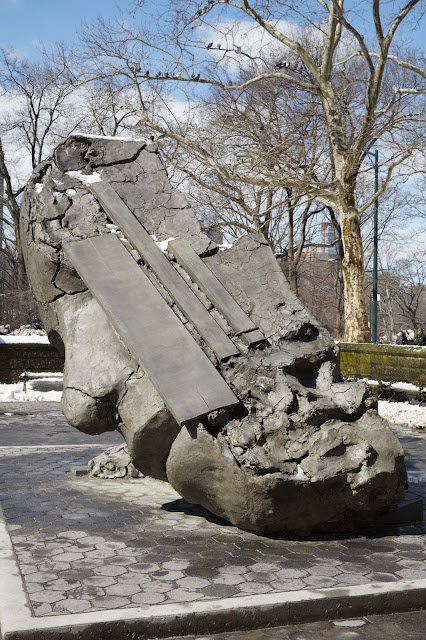Mark Manders’ Tilted Head is a work of fiction. It has the appearance of unfired clay combined with everyday objects but in fact is made entirely of cast bronze. The cracks and fissures that cover its surface imply an organic process of drying and decay, yet its metal form is fixed. It might suggest an incomplete model, abandoned in the artist’s studio, if not for the fact that its colossal size and civic location lend it the air of a grand monument. Eyes shut, the androgynous figure’s mask-like features are at rest, undisturbed by an abrupt slice through a third of its face. The unfinished side of the head is held as if in a splint by wooden planks, one tied with rope. At the back, chairs and a suitcase, all slightly reduced in size, protrude from a mass of formless material. These shifts in scale, unexplained objects, and trompe l’oeil bronze effects alter our perception and spark the imagination.
Manders (b. 1968, The Netherlands) has been interested in the human figure throughout his career, and is particularly fascinated with the head, which he sometimes depicts detached from the body and juxtaposed with different elements. These heads are always stylized representations rather than individualized portraits. His approach creates a paradoxical sense of both immediacy and timelessness, of something newly made with fresh clay yet belonging to the traditions of classical statuary. With Tilted Head, Manders has rendered a compelling fiction of human form that inhabits a poetic space between representation and abstraction, serenity and rupture, life and mortality.







